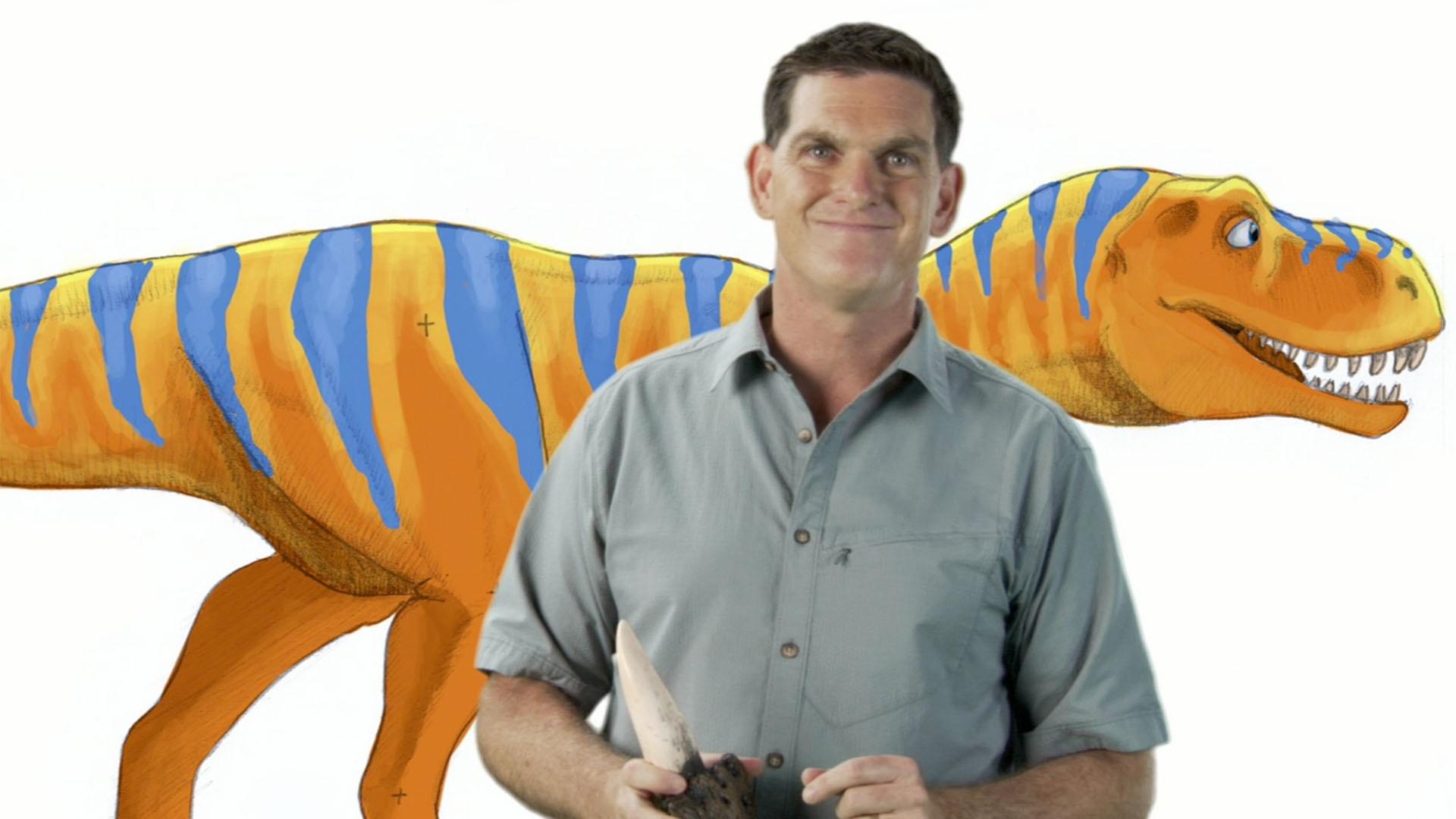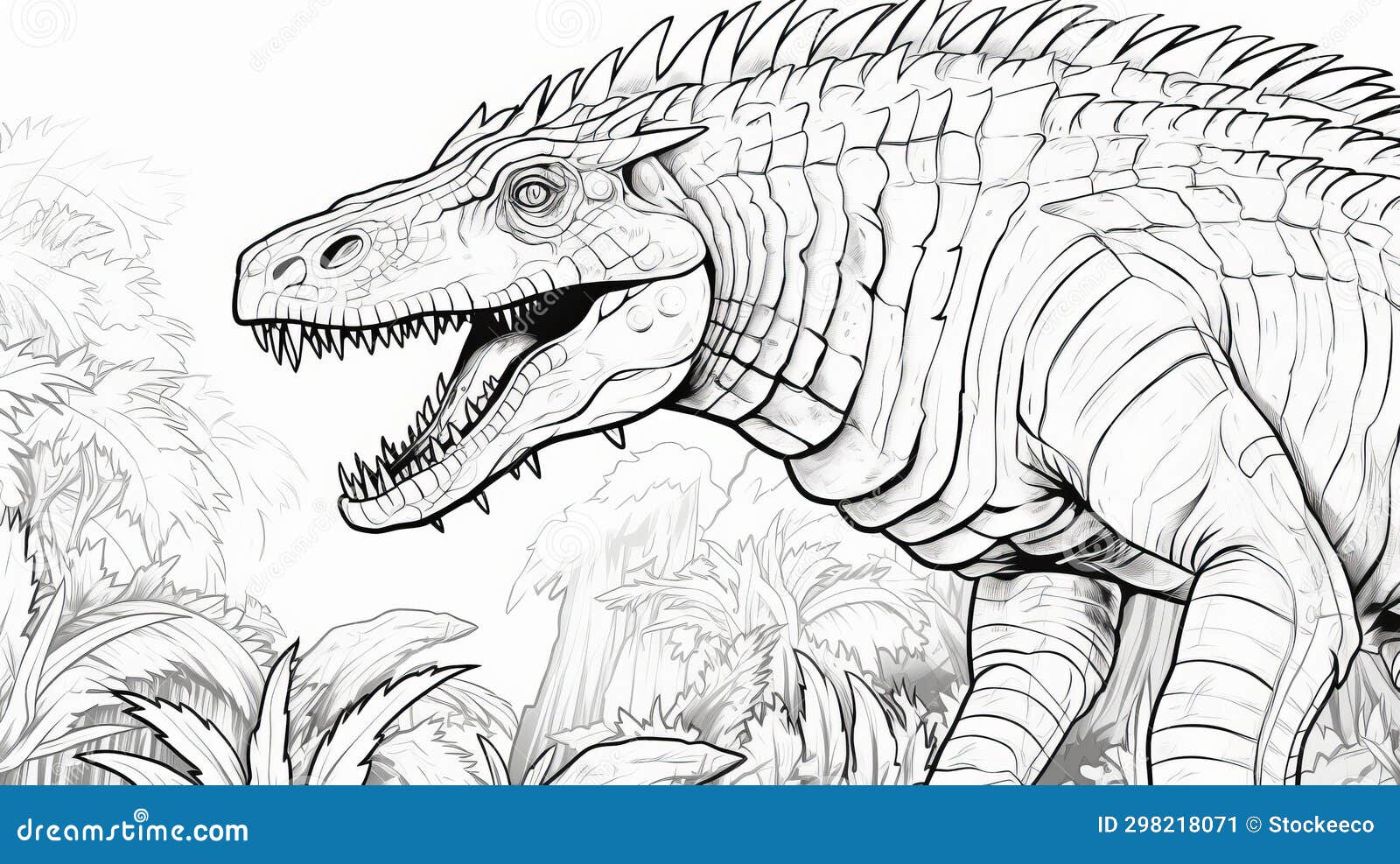
Beyond T-Rex: 7 Unexpected Dinosaur Discoveries That Will Rewrite Your Paleontological Playlist
For decades, the Tyrannosaurus Rex has reigned supreme in the public imagination – the undisputed king of the Cretaceous, a monstrous, toothy icon of prehistoric power. But what if we told you that the dinosaur kingdom was a far more diverse and astonishing realm than the familiar silhouette of T. Rex suggests? Recent years have seen a torrent of groundbreaking discoveries that are shaking the very foundations of our understanding, revealing creatures so bizarre and magnificent, they make even the mighty T. Rex seem a tad… conventional.
Prepare to journey beyond the reign of the tyrant lizard. We’re diving into the deep past to unearth seven unexpected dinosaur discoveries that prove the age of dinosaurs was a canvas of unimagined wonders, far stranger and more spectacular than we ever dared to believe.
1. The Feathered Fury: Yutyrannus, the “Tyrant King of Beautiful Feathers”
While T. Rex was busy perfecting its fearsome roar, its distant cousins were rocking a decidedly different look. Enter Yutyrannus, a colossal tyrannosauroid from Early Cretaceous China, and the largest known feathered dinosaur. Imagine a creature scaling up to 9 meters (30 feet) long, covered in a downy coat of filamentous feathers, not for insulation, but likely for display. This discovery shattered the perception of tyrannosaurs as exclusively scaly beasts, demonstrating that even the most fearsome predators might have sported a vibrant, feathery plumage. It begs the question: was T. Rex the last of its kind to shed its stylish, prehistoric sartorial flair?
Key Features:
| Feature | Detail |
|---|---|
| Size | Up to 9 meters (30 ft) long |
| Feathers | Extensive, filamentous covering |
| Location | China |
| Significance | Largest known feathered dinosaur, redefines tyrannosaur appearance |
2. The Aquatic Asparation: Spinosaurus, the Crocodile-Toothed River Hunter
For a long time, the narrative of large predatory dinosaurs was firmly terrestrial. Then came Spinosaurus. With its elongated, crocodile-like snout, conical teeth perfectly adapted for catching fish, and powerful hind legs, Spinosaurus was a semi-aquatic marvel. Its immense sail-like dorsal fin suggests a creature that not only navigated but thrived in the riverine environments of North Africa. Forget lumbering on land; this dinosaur was a master of its watery domain, challenging our ingrained image of dinosaurs as purely land-dwelling behemoths.
Key Features:
| Feature | Detail |
|---|---|
| Size | Estimated 15-18 meters (50-60 ft) long |
| Habitat | Semi-aquatic, riverine environments |
| Diet | Primarily fish |
| Significance | First semi-aquatic, sail-backed predatory dinosaur |
3. The Giant Panda of Dinosaurs: Deinocheirus, the “Horrible Hand” That Was Anything But
When the first fossils of Deinocheirus were unearthed in the Gobi Desert, all that was found were two gargantuan arm bones and a few rib fragments. The sheer size of these “horrible hands” led paleontologists to envision a terrifying theropod, perhaps a predator rivalling T. Rex. Decades later, more complete skeletons revealed a vastly different, and utterly bizarre, reality. Deinocheirus was a colossal ornithomimosaur, a “bird-mimic” dinosaur, standing over 11 meters (36 feet) tall with a duck-like bill, a hump on its back, and long, ungainly arms. This gentle giant was likely an omnivore or herbivore, a far cry from the monstrous predator its initial fragments suggested.
Key Features:
| Feature | Detail |
|---|---|
| Size | Over 11 meters (36 ft) tall |
| Appearance | Duck-like bill, large hump, massive arms |
| Diet | Likely omnivorous or herbivorous |
| Significance | Utterly unexpected morphology for a theropod |
4. The “Bat-Winged” Terror: Yi qi, the Stretchy-Skinned Glider
The idea of feathered dinosaurs is now widely accepted, but Yi qi took flight evolution to an entirely new, and frankly, alien level. This small theropod from China possessed an unusually long, bat-like bone extending from its wrist, supporting a membrane of skin. While it likely couldn’t achieve true powered flight, Yi qi was a glider, a creature that used its membrane to leap and glide between trees. This discovery revealed a remarkable diversification in aerial locomotion among dinosaurs, showcasing a lineage that experimented with radically different ways to conquer the prehistoric skies.
Key Features:
| Feature | Detail |
|---|---|
| Size | Small, sparrow-sized |
| Flight | Patagium (skin membrane) for gliding |
| Location | China |
| Significance | Unique bat-like wing structure in a dinosaur |
5. The “Feathered Lizard” that Challenged Classifications: Halszkaraptor
Imagine a dinosaur that looked like it swam out of a fantasy novel: a long, slender neck, a duck-like bill filled with tiny teeth, and webbed feet. This is Halszkaraptor, an enigmatic theropod from Mongolia that exhibits a peculiar mosaic of traits. Its anatomy suggests an amphibious lifestyle, possibly hunting fish and small vertebrates in shallow waters. For a long time, its unique features even led some to question if it was a dinosaur at all, a testament to its utterly alien appearance and its ability to blur the lines between established dinosaurian groups.
Key Features:
| Feature | Detail |
|---|---|
| Size | Roughly the size of a large duck |
| Habitat | Likely amphibious, shallow waters |
| Diet | Small fish and vertebrates |
| Significance | Bizarre mix of avian and reptilian traits |
6. The Unexpected Herbivore: Chilesaurus, the “Lizard from Chile”
The world of herbivorous dinosaurs is often dominated by the image of lumbering sauropods or armored ankylosaurs. Chilesaurus, discovered in the Patagonia region of Chile, throws a delightful curveball. This theropod, belonging to the same broad group as T. Rex and Velociraptor, evolved to become a dedicated herbivore. It possessed a pot-bellied body, a long neck, and a beak-like mouth, characteristics usually associated with entirely different dinosaur lineages. Chilesaurus is a prime example of convergent evolution, demonstrating how different dinosaur groups could independently arrive at similar solutions for a plant-based diet.
Key Features:
| Feature | Detail |
|---|---|
| Lineage | Theropod (carnivorous group) |
| Diet | Herbivorous |
| Appearance | Pot-bellied, long neck, beak-like mouth |
| Significance | Theropod that independently evolved herbivory |
7. The Dinosaur Next Door: Fossil Discoveries in Texas
While headline-grabbing giants from distant lands are fascinating, the idea that dinosaurs once roamed lands we can visit today is incredibly compelling. Sites across Texas, like those potentially showcased at institutions such as the Perot Museum, offer tangible connections to the prehistoric past. Well-preserved tracks and fossil finds in their original locations allow us to literally walk in the footsteps of these ancient creatures. These discoveries, though perhaps less exotic than a feathered Yutyrannus, are crucial. They anchor our understanding of dinosaur distribution, behavior, and the ancient ecosystems that existed right beneath our feet, proving that the age of dinosaurs wasn’t just a distant spectacle, but a reality that touched even familiar landscapes.
Key Features:
| Feature | Detail |
|---|---|
| Location | Various sites, including Texas |
| Evidence | Well-preserved footprints and fossils |
| Significance | Connects ancient life to modern landscapes |
| Accessibility | Allows for direct engagement with paleontological history |
The Ever-Evolving Dinosaur Story
These seven discoveries are just a glimpse into the vast and ever-expanding universe of dinosaur paleontology. Each new find chips away at our preconceived notions, revealing a prehistoric world far more diverse, bizarre, and beautiful than we ever imagined. The reign of T. Rex might be iconic, but the true story of the dinosaurs is a much richer tapestry, woven with creatures that defy expectations and inspire endless wonder. So, the next time you think of dinosaurs, remember: the king may have his crown, but the kingdom is filled with far more extraordinary subjects.

Additional Information
Beyond T-Rex: 7 Unexpected Dinosaur Discoveries That Will Amaze You
For decades, Tyrannosaurus rex has reigned supreme in our collective imagination as the ultimate dinosaur predator. Its massive size, bone-crushing jaws, and terrifying reputation have made it the undisputed king of the prehistoric world. However, the ever-evolving field of paleontology consistently unearths evidence that challenges our long-held beliefs, revealing a more diverse, bizarre, and awe-inspiring prehistoric ecosystem than we ever imagined.
Recent discoveries are painting a richer picture of dinosaur life, showcasing creatures that defy expectations and broaden our understanding of these ancient giants. As the search for evidence continues, and new fossils are brought to light, the narrative of dinosaur evolution is constantly being rewritten. Forget everything you thought you knew; it’s time to venture “Beyond T-Rex” and explore seven unexpected dinosaur discoveries that will revolutionize your perception of these magnificent creatures.
1. The Reign of the Giants: Giganotosaurus and Carcharodontosaurus
While T. rex was undoubtedly a formidable predator, recent findings suggest it might not have been the absolute biggest. Paleontologists have unearthed evidence of colossal theropods like Giganotosaurus and Carcharodontosaurus, which rivaled or even surpassed T. rex in size. These titans, with their serrated, blade-like teeth, were perfectly adapted for hunting large prey and represent a significant expansion of our understanding of apex predator diversity. The ongoing scientific debate over which of these giants truly held the title of “king” highlights the dynamic nature of paleontological research and the constant uncovering of new “top dogs” in the ancient food chain.
2. The Feathered Terror: Yutyrannus—A Tyrannosaur in Technicolor?
The discovery of Yutyrannus, a massive tyrannosaurid from China, was a game-changer. Unlike its scaly descendants, Yutyrannus was covered in filamentous, feather-like structures. This finding significantly blurred the lines between feathered dinosaurs and more traditional “scaly” representations, suggesting that large tyrannosaurs might have possessed a more vibrant and colorful existence than previously believed. Imagine a creature as imposing as a T-Rex, but adorned with a coat of proto-feathers – a truly breathtaking and unexpected image.
3. The Aquatic Apex Predator: Spinosaurus – A Dinosaur Built for Water
Spinosaurus has long been known for its distinctive sail-like dorsal fin and crocodile-like snout, but recent discoveries have revealed it to be even more specialized for an aquatic lifestyle. Evidence points to adaptations for hunting in rivers and coastal waters, including dense bones for buoyancy control and a powerful tail for propulsion. This makes Spinosaurus one of the few known large theropods to have truly embraced an amphibious existence, a stark contrast to the terrestrial dominance typically associated with dinosaurs.
4. The Bizarre and Beautiful: Deinocheirus – A Giant with Peculiar Traits
Deinocheirus is a prime example of how strange and wonderful dinosaurs could be. This colossal ornithomimosaur, meaning “terrible hand,” was initially known only from two enormous forearm bones. When more complete remains were finally unearthed, scientists were astonished by its unique features: a massive hump on its back, a duck-like beak, and a disproportionately small skull. Its exact lifestyle remains a mystery, but its peculiar anatomy has challenged conventional ideas about how dinosaurs evolved and adapted.
5. The Tiny Terror with a Twist: Yi qi – A Dinosaur with Bat-Like Wings
The discovery of Yi qi has pushed the boundaries of our understanding of dinosaur flight. This small, feathered theropod from China possessed an extraordinary feature: a long, bony finger that supported a membrane of skin, creating a wing structure eerily similar to that of modern bats. While not capable of true powered flight like birds, Yi qi likely used these “patagia” for gliding, demonstrating an unexpected evolutionary pathway for aerial locomotion among dinosaurs.
6. The Swift Swimmer: Halszkaraptor – A Dinosaur That Looked Like a Duck
Halszkaraptor, nicknamed “Dunkleosteus” of the dinosaur world, is another testament to the bizarre adaptations found in prehistoric life. This small, predatory theropod possessed a long neck, a streamlined body, and a beak-like snout filled with tiny teeth. These features, combined with evidence of webbed feet, suggest it was a proficient swimmer and likely hunted fish and other aquatic prey, further diversifying the ecological roles dinosaurs occupied.
7. The Transitional Marvel: Chilesaurus – A Vegetarian That Mimicked a Carnivore
Chilesaurus represents a fascinating case of convergent evolution. This herbivorous dinosaur from South America possessed several features typically associated with carnivorous theropods, such as a relatively long neck, a s-shaped vertebral column, and a deep pelvis. This discovery highlights how evolutionary pressures can lead to similar anatomical solutions in unrelated species, blurring the lines between traditional dinosaur classifications.
Beyond the Familiar: A World of Discovery
These seven dinosaurs are just a fraction of the incredible discoveries that continue to reshape our understanding of the Mesozoic Era. From colossal aquatic hunters to feathered giants and bizarre gliding creatures, the world of dinosaurs is far stranger and more complex than we ever imagined. Sites like the Perot Museum in Dallas and numerous locations across Texas (as highlighted by Lone Star Travel Guide) offer opportunities to witness these ancient wonders firsthand through fossils and exhibits.
The ongoing pursuit of paleontological knowledge, fueled by a constant stream of new evidence and innovative research, promises even more astonishing revelations in the years to come. So, the next time you think of dinosaurs, remember that the reign of T. rex is just one chapter in a vast and awe-inspiring saga, a saga that continues to unfold with every new fossil unearthed. The adventure “Beyond T-Rex” has truly just begun.
